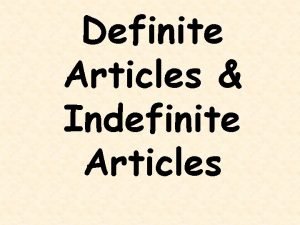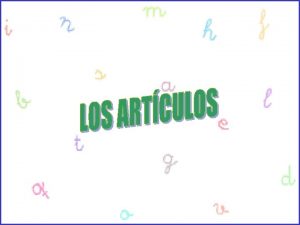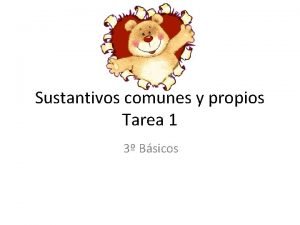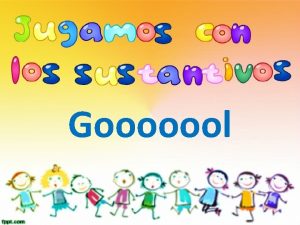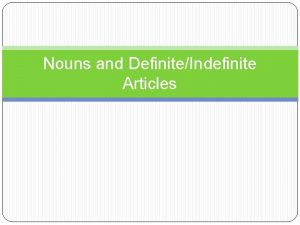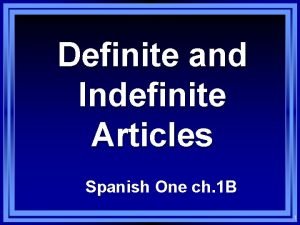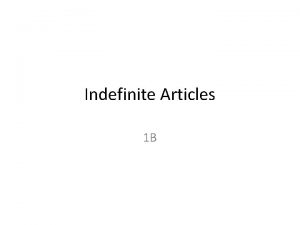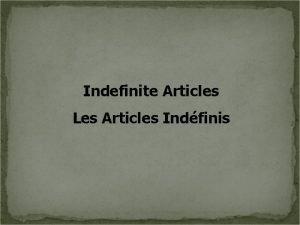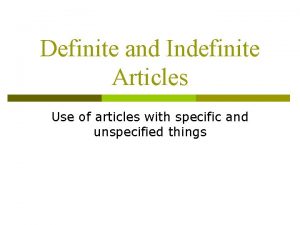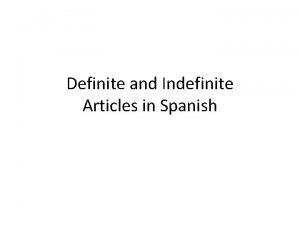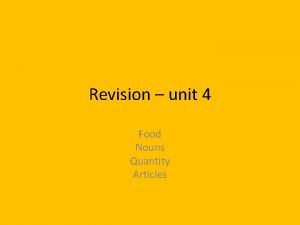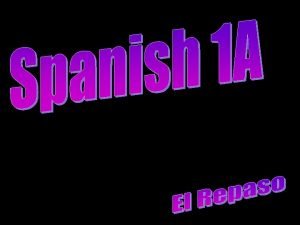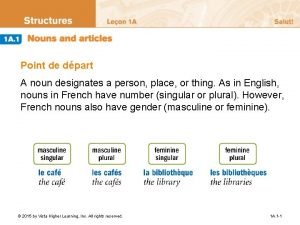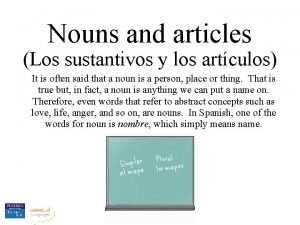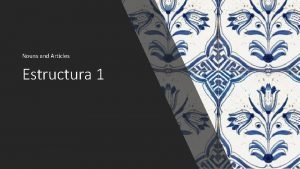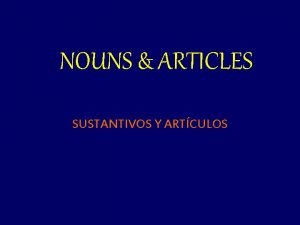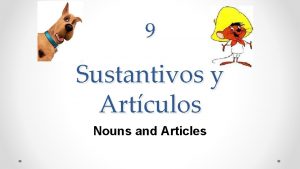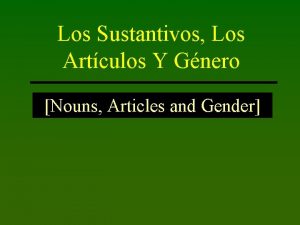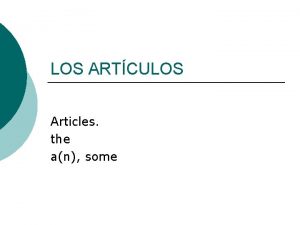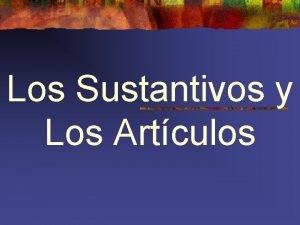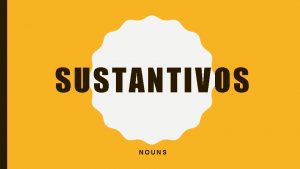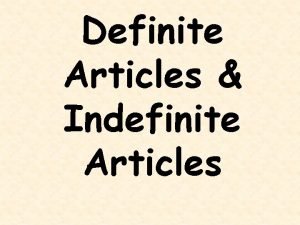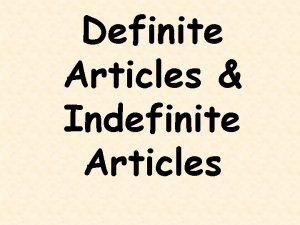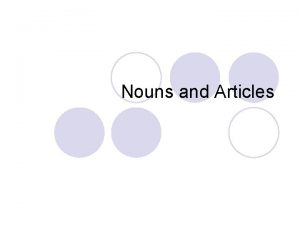Spanish NOUNS ARTICLES SUSTANTIVOS Y ARTCULOS NOUNS Nouns

















- Slides: 17

Spanish NOUNS & ARTICLES SUSTANTIVOS Y ARTÍCULOS

NOUNS • Nouns refer to people, animals, places, abstractions and things.

In Spanish, EVERY noun has a gender. They belong to 2 gender categories: Feminine Masculine (feminina) (masculino) or _________________

-Masculine nouns USUALLY end in O ___ __ el helado - Feminine nouns USUALLY end in A ___. la fruta

Other Spanish Nouns • Other Spanish nouns end in -e or a consonant. For example: el cine el marcador la clase la televisión - Some can be both masculine and feminine: - (el/la) estudiante

Masculine / Feminine Exceptions: –el día –el idioma –el poema –el clima -el problema -el drama -el mapa

SINGULAR nouns name 1 of “something. ” • ______ – the girl – the student – the apple -la muchacha -el estudiante -la manzana PLURAL • _______ nouns name more than 1 of “something. ” – the girls – the students – the apples -las muchahas -los estudiantes -las manzanas

Making Nouns Plural VOWEL If a noun ends in a _____ (a, e, i, o, u) ADD _____ to “-s” it plural. make • chicos • sillas CONSONANT If a singular noun ends in a ________ (b, l, t…) ADD _____ to make it plural. “-es” • trabajadores • carteles

Making Nouns Plural • Singular nouns that end in z change the z to c in the plural. • El lápiz los lápices

A practicar chicos chico ________ chicas chica ________ días día ________________ helados persona ________ mujeres mu jer ________ hombres hombre ________

Definite Articles “the” • When we want to say _______ in Spanish, we use Definite Articles. CHANGE • Definite Articles _______ according to the ______ of thegender noun and according to whether the noun is singular plural _____ or _____

Definite Articles: “the” Gender and Number SINGULAR PLURAL MASCULINE El Los La Las FEMININE

A practicar las galletas la galleta ________ los refrescos el refresco ________ los estudiantes el estudiante ________________ las estudiantes las pizzas la pizza ________

Indefinite Articles • When we want to say ____, “a” ____, “an” or____ in “some” Spanish, we use Indefinite Articles. • Indefinite Articles also _______ according to the ______ of the noun and CHANGE according to whether the noun is _____ orgender _____. singular plural

Indefinite Articles: “a/some” Gender and Number MASCULINE FEMININE SINGULAR PLURAL Un Unos Unas

Al practicar unos amigos un amigo ________ unas amigas una amiga ________ unos deportes un deporte ________ unos mapas un mapa ________ unas pizzas una pizza ________ unas fiestas una fiesta ________

HELPFUL HINT It’s a good idea to learn a noun with its definite article, el or la, because that will always tell you the gender and number.
 Plural noun in spanish
Plural noun in spanish Mama es sustantivo propio o comun
Mama es sustantivo propio o comun Palabras en sustantivo
Palabras en sustantivo Palomas que sustantivo es
Palomas que sustantivo es Definite article spanish
Definite article spanish Examples of indefinite articles in spanish
Examples of indefinite articles in spanish 4 indefinite articles in spanish
4 indefinite articles in spanish Indefinite article in spanish
Indefinite article in spanish Definite and indefinite articles examples
Definite and indefinite articles examples The definite articles in spanish
The definite articles in spanish What are the two singular definite articles in spanish
What are the two singular definite articles in spanish Indefinite article for mochila
Indefinite article for mochila Unit 4 nouns articles word formation
Unit 4 nouns articles word formation Ir + a + infinitive (p. 206) answers
Ir + a + infinitive (p. 206) answers Choose the correct article to describe each noun
Choose the correct article to describe each noun Change the gender
Change the gender Unas escuelas singular
Unas escuelas singular Spanish packet answers
Spanish packet answers
